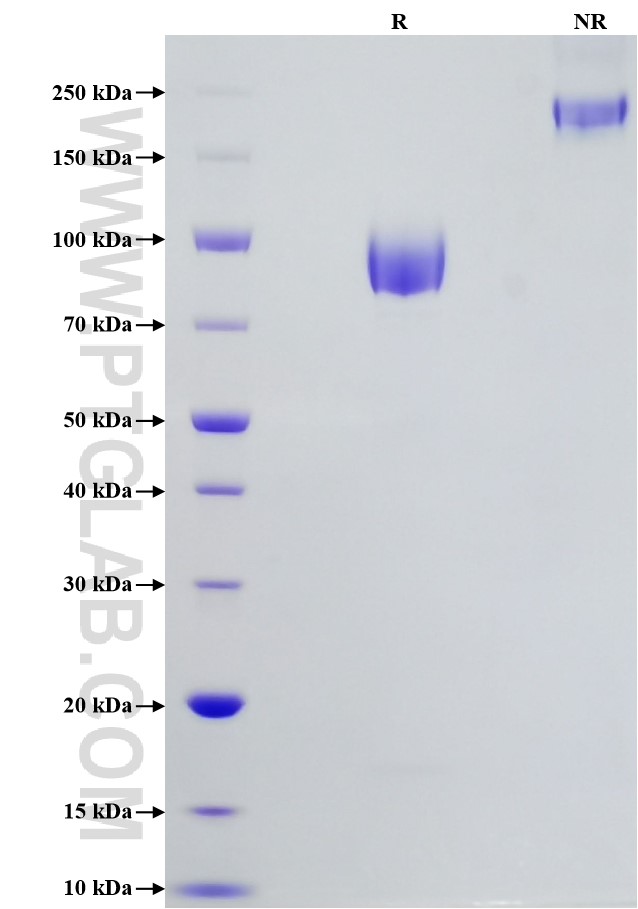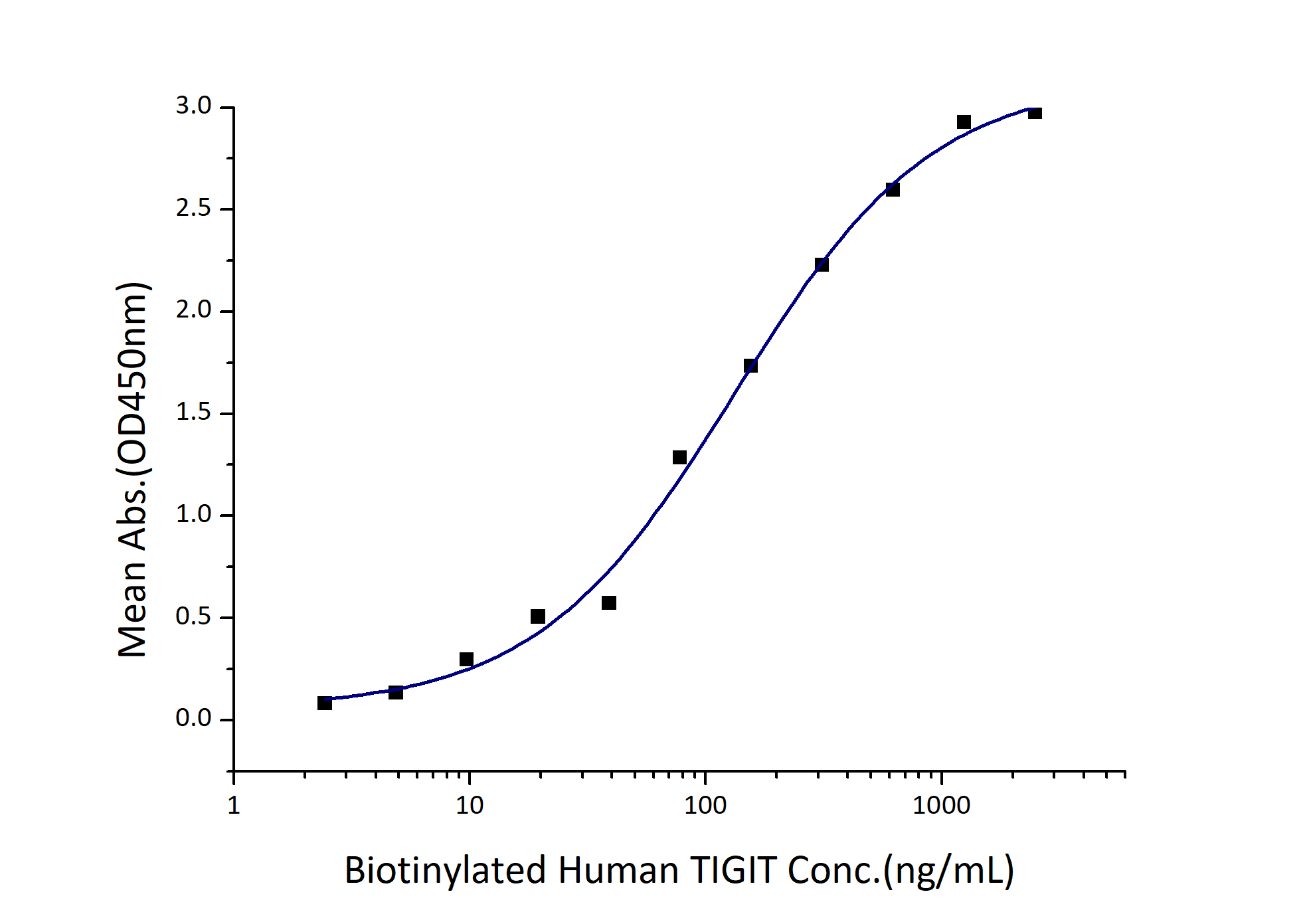Recombinant Human CD155/PVR protein (hFc Tag, Myc Tag, His Tag)
ED50
66-264 ng/mL
Species
Human
Purity
>95 %, SDS-PAGE
GeneID
5817
Accession
NP_006496.4
验证数据展示
Technical Specifications
| Purity | >95 %, SDS-PAGE |
| Endotoxin Level | <1.0 EU/μg protein, LAL method |
| Biological Activity |
Immobilized Human CD155 (hFc tag, Myc tag, His tag) at 2 μg/mL (100 μL/well) can bind Biotinylated Human TIGIT (hFc tag, Myc tag, His tag) with a linear range of 66-264 ng/mL. |
| Source | HEK293-derived Human CD155 protein Trp21-Asn343 (Accession# NP_006496.4) with a human IgG1 Fc tag, a Myc tag and a His tag at the C-terminus. |
| Predicted Molecular Mass | 63.6 kDa |
| SDS-PAGE | 85-100 kDa, reducing (R) conditions |
| Formulation | Lyophilized from sterile PBS, pH 7.4. Normally 5% trehalose and 5% mannitol are added as protectants before lyophilization. |
| Reconstitution | Briefly centrifuge the tube before opening. Reconstitute at 0.1-0.5 mg/mL in sterile water. |
| Storage |
It is recommended that the protein be aliquoted for optimal storage. Avoid repeated freeze-thaw cycles.
|
| Shipping | The product is shipped at ambient temperature. Upon receipt, store it immediately at the recommended temperature. |
Background
PVR also known as CD155, is a Type I transmembrane glycoprotein in the immunoglobulin superfamily. It contains three extracellular immunoglobulin-like domains, D1-D3, of which D1 is recognized by the virus. Mature human PVR consists of a 323 amino acid extracellular domain with one N-terminal V-type and two C2-type Ig-like domains, a 24 amino acid transmembrane segment, and a 50 amino acid cytoplasmic tail. PVR is thought to play a role in adhesion by interaction with the ECM component vitronectin as well as a role in NK killing of tumor cells. PVR binds to two receptors of NK cells, CD96 and CD226, and accumulates at cell-cell contact sites, leading to the formation of mature immune synapses between NK cells and target cells. PVR serves as the entry receptor for poliovirus and thereby mediates human susceptibility to poliovirus infection.
References:
1. Mendelsohn CL. et al. (1989). Cell. 56(5):855-865. 2. Zhang P. et al. (2008). Proc Natl Acad Sci U S A. 105(47):18284-9. 3 .Pende D. et al. (2005). Mol Immunol. 42(4):463-469. 4. Fuchs A. et al. (2004). J Immunol. 172(7):3994-8.

